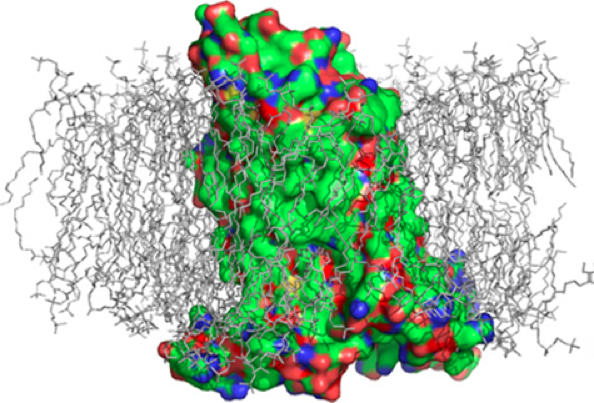Domainex wins award to develop GPCR drug discovery technology

Cambridge, UK, 23rd January 2018 / Sciad Newswire / Domainex Ltd, a privately-owned drug discovery services company, has been awarded £118,000 from the UK’s innovation agency, Innovate UK, to develop a new biophysical screening method for G-protein coupled receptors (GPCRs). This investment represents a significant opportunity for the company to develop a technology to accelerate the discovery of new drugs.
‘Domainex is developing a new way of starting GPCR drug discovery projects by using a biophysical technique called MicroScale Thermophoresis (MST), in combination with a method developed by Professor Tim Dafforn and his team at the University of Birmingham to stabilise the receptor,’ explains Trevor Perrior, Chief Scientific Officer, Domainex. ‘This Biomedical Catalyst Feasibility Award from Innovate UK will enable Domainex scientists to test the feasibility of using this approach on GPCRs, in order to establish a generic platform that would work for any purified GPCR without the need for stabilising mutations.’
‘This 12 month project will lead to a new service that Domainex can offer to prospective clients. It will facilitate our clients’ research projects meaning that better drugs will get to patients, faster,’ adds Tom Mander, Chief Operating Officer, Domainex. ‘As an integrated drug discovery services provider, and the first CRO in the UK to offer fragment screening using MST, Domainex is in a unique position to innovate and advance drug discovery projects in this pivotal target class.’
Ends
For more information, contact:
Domainex
Dr Tom Mander
T: +44 (0) 7584 578 024
E: tom.mander@domainex.co.uk
Media Relations – Sciad Communications
Deborah Cockerill / Emma Pickup
T: +44 (0)20 7470 8801
E: domainex@sciad.com
Notes to Editors
About Domainex
Established in 2001 as a spin-out from University College London, Birkbeck College, and the Institute of Cancer Research, Domainex Ltd. is a Cambridge-based, privately-owned company that provides integrated medicines research services to global pharmaceutical, biotechnology and academic partners. Its services cover a wide span of the drug research value chain, from disease target selection to pre-clinical candidate nomination. Domainex’s services include recombinant protein expression and use of its proprietary technology platform, Combinatorial Domain Hunting, to identify soluble protein fragments for structural biology and assay development. Hit finding activities encompass assay development and screening utilising its BioassayBuilder, FragmentBuilder and LeadBuilder platforms. The core of the service offering is undertaking multi-parameter medicinal chemistry optimisation of hits and leads with its ‘every compound counts’ approach, which can save up to 30% on the average industry time from target to candidate.
About Innovate UK
Innovate UK is the UK’s innovation agency. It works with people, companies and partner organisations to find and drive the science and technology innovations that will grow the UK economy. For further information visit www.innovateuk.gov.uk
About GPCR’s
G-protein coupled receptors (GPCRs) are proteins found on the surface of cells: they detect molecules outside the cell and consequently activate internal signalling pathways that mediate cellular responses. Despite being one of the most popular classes of investigational drug targets, with 25-30% of all marketed drugs focussing on them globally, many with untapped therapeutic potential, are yet to be identified. The current global GPCR-targeted therapeutics market is growing rapidly and is expected to reach an estimated value of USD 3,533.4 million by 20221.
Existing methods of studying GPCRs are successful at identifying and profiling chemicals that modulate their function, but tend to find compounds that are only partially selective for the desired target, because they give insufficiently precise information to drive rational drug design towards highly-specific agents. Research using mutated forms of some GPCRs makes them stable enough to use structural and biophysical methods, but this is a difficult and lengthy task requiring extensive method development for each individual target.
Image:
A schematic representation of a GPCR–SMALP viewed from within the plane of the membrane. Only the receptor (coloured) and lipid molecules (grey) are shown.
Image credit: Wheatley et al., (2016) GPCR-Styrene Maleic Acid Lipid Particles (GPCR-SMALPs): their nature and potential. Biochem. Soc. Trans. 44, 619-623.
References:
- G-Protein Coupled Receptors Market Expected to Reach USD 3.53 Billion Globally in 2022: Transparency Market Research
Got an innovation you need bringing to life?
We’d love to hear from you! Head to our contact page to start a conversation.
